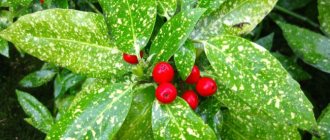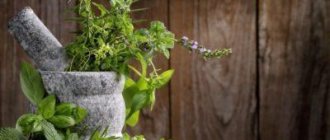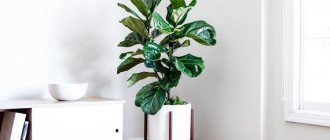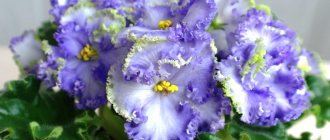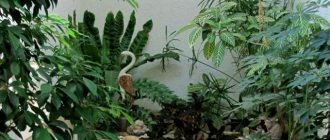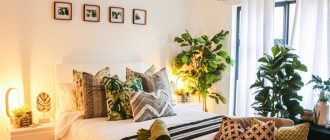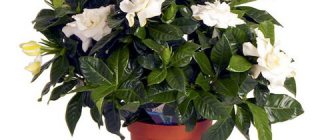We all love to keep indoor flowers at home.
Many of them need the sun to grow and develop. But the southern window sill is not enough for everyone. In this case, you should turn your attention to shade-loving and shade-tolerant indoor plants. These flowers can do well with a minimum of sunlight, which makes them welcome guests in any home. Dear readers! For you, we have created communities on social networks in which useful articles and interesting ideas are published several times a day! Subscribe and receive useful content in a convenient format!
What plants are considered shade-loving?
First of all, it is necessary to clarify that there are shade-tolerant plants, and there are shade-loving ones.
The first group includes flowers that feel equally good both in the light and when there is a lack of sunlight. The difference in lighting has virtually no effect on their appearance, abundance and duration of flowering.
The second group includes plants that are contraindicated in bright and direct sunlight and prolonged exposure to the sun. This group has 2 more names - sciophytes and heliophobes. That is, plants that are afraid of the sun.
Bright light is harmful to them, and prolonged exposure to the south side is fraught with overheating of the leaf plates and sunburn.
Among the plants that prefer dark corners there are both decorative flowering (begonias, violets, anthurium, clivia, cyclamen, fuchsia, etc.) and decorative deciduous (chlorophytum, sansevieria, aspidistra, aglaonema, philodendron) species. Also, some types of palm trees and other large plants with large leaves or long stems (dracaena, cordyline, monstera, etc.) do not like the sun.
Loving shade and living in an aquarium
High humidity and lack of light are not the most pleasant conditions for most plants. The exception is a small group of species that live on the banks of water bodies or half in the water.
Caladium
The plant is valued for the beauty of its leaves - plain and variegated, combining shades of green, white, yellow, and purple. The tuber overwinters in the soil, the above-ground part “falls asleep.” Beautiful leaves appear in the spring and last only until early autumn. In this case, the plant requires high humidity, heat and diffused light.
Caladium is placed in partial shade, preferably in moist peat. The plant is moisture-loving, so it feels good in the bathroom.
Cryptanthus
A flower with a luxurious rosette of brightly colored leaves is not easy to grow, like all Bromeliads. Although some people think that Cryptanthus is similar to Sansevieria, some of its species have the same expressive stripes on the leaf blades. However, bromeliads are more demanding of location and humidity and grow better in greenhouses and florariums.
The flower requires shady or artificially lit locations. The wide, star-shaped, colorful rosettes are the most shade-loving of all bromeliads.
Siderasis brownish
Another plant with leaves collected in a rosette, distinguished by silver stripes on a dark green background and brown hairiness. In nature, siderasis grows in shady, moist forests and craves the same atmosphere in indoor conditions.
It is better to keep it in an aquarium or florarium with high walls, where you can create a wet greenhouse.
Cyperus
The marsh plant Cyperus is tolerant of light. The main thing for him is high humidity. This is an unpretentious indoor flower that is ready to adapt to a small amount of light.
Cyperus grows well in artificial light, which allows it to be placed in a hallway or bathroom, in a tray of water or an aquarium.
Shade-loving indoor plants for the hallway
For the hallway it is better to choose decorative foliage plants. If the size of the room allows, you can pay attention to palm trees and false palms, as well as specimens with large spreading leaves.
Monstera
A distinctive feature of Monstera is its large carved leaves that grow on long, dense petioles. Monstera is able to amaze your guests right from the door. It adapts well to room conditions, and using supports you can create a beautiful flower arrangement.
ATTENTION! Monstera is considered a vampire plant, and it is not recommended to place it in the bedroom.
Ivy
This is a whole group of hanging plants and vines. These include Philodendron, Tetrastigma and Syngonium. The advantage of ivy and vines is that they do not take up useful space in the room. They can be placed on cabinets and shelves, or hung on the walls. In the cramped conditions of Russian apartments, this is an important quality. The advantages of ivy include their ease of care. They grow well without regular exposure to sunlight.
Ficus
Ficus is a plant that does not really like sunlight and tolerates the coolness of the hallway well. It is better to choose tree-like varieties. The advantage of ficus trees, in addition to their unpretentiousness, is their high decorative value. The flower lends itself well to shaping. At the same time, you can give the appearance not only to the crown, but also to the trunks and stems of the ficus.
Rapis
It is highly decorative. Loves frequent watering. The advantage of Rapis is its slow growth. That is, this palm tree will rarely have to be replanted. Rapis has unusual oval leaves. This plant is suitable for wide halls, hallways, and verandas.
Ferns
This group includes Pteris, Platicerum, Pellea, Venus Volos, Blekhnum, Davallia and many other plants. Ferns tolerate the absence of light well, since in nature they live in the lowest tiers of tropical forests. They love moisture, but are otherwise extremely picky plants.
ON A NOTE. It is not recommended to place ferns in places where people are constantly present: living rooms, bedrooms, kitchens.
Shade-tolerant vines and ampels
Climbing, shade-loving and shade-tolerant plants look very attractive in hanging baskets, planters and baskets. Asparagus pleases with its bright openwork foliage, chlorophytum cheerfully produces “babies”, striped zebrins flash.
Assortment of hanging plants for dark rooms:
- Tradescantia;
- plectranthus;
- chlorophytums;
- asparagus;
- ivies.
This group of plants is suitable for rooms with artificial lighting and northern windows. When choosing hanging types, pay attention to the general pattern. Indoor flowers with monochrome leaves are more shade-tolerant than variegated ones.
Common indoor ivy
A house flower with leathery green leaves can be grown in the bathroom. It should be taken into account that a lot of water evaporates during showering and bathing. Therefore, the humidity in the room is higher than in other rooms.
Ivy loves warmth and moisture, tolerates shading, and adapts to artificial lighting. Hanging, densely leafy shoots look great on high shelves or in hanging plant pots.
Syngonium
Species of the genus Syngonium are distributed in the tropics and subtropics of America. These are large vines, usually growing as one long shoot. Modern hybrids differ in their type of growth - they are more compact, in the form of bushes or ampels.
Syngonium with monochromatic green leaves is more shade-tolerant. Variegated varieties are partially shade-tolerant.
Philodendron
The green climbing plant has heart-shaped leaves and tolerates low light in the corners of the room. Partial shade on a wall next to or opposite a window is an ideal place for a philodendron.
Philodendron can be grown in the kitchen, bathroom. Leaves purify and disinfect the air, trap gases that are released when burning gas or coal.
Asparagus
Most asparagus species prefer diffused light and cannot tolerate direct rays. They are highly decorative due to their delicate greenery and creeping shoots. It is convenient to grow asparagus in hanging baskets, attaching them to the wall.
Considering that in the autumn-winter period the flower needs rare watering, placing it on the wall does not cause any special problems.
Flowering shade-loving plants
There are not many flowering shade-loving plants, but they do exist. Basically, a flower (or inflorescence) only complements the beauty of the leaves, emphasizing their unusualness.
But there are also specimens that are valued specifically for their flowers. For example, fuchsia, cyclamen, begonia.
Calathea Crocata
Calathea Crocata is considered shade-tolerant. This is a very beautiful plant, capable of growing up to 0.7 - 0.8 m. It has large beautiful leaves. The leaf blade is colored green (upper part) and dark burgundy (lower part). In addition to beautiful leaves, Calathea boasts inflorescences. Small flowers form spikelets of various shades. Calathea is quite capricious in care; it requires air humidity, temperature and regular spraying.
Cyclamen
The plant is known primarily for its tilted flowers with bright, but at the same time delicate coloring of the petals. But the leaves of Cyclamen are no less beautiful. They can be variegated or plain. Cyclamen does not like direct light, but the setting sun will not harm it, so it can be placed on a western window.
Anthurium
The handsome Anthurium is distinguished by both its flowering and foliage. The plant has a small spike-shaped inflorescence, which is located on the spathe. This particular leaf differs from the rest in its color and shape. The leaves of the flower are no less attractive. They are glossy, dark green, with a pointed tip.
Begonia
Begonia prefers partial shade, but it is not advisable to place it in bright sun. The ideal place for it is an east or west window. Begonia tolerates the lack of light, but may lose its decorative value. The flower loves high humidity, but not spraying. Despite the fact that Begonia is valued for its leaves of different shades, it blooms quite beautifully. Among the varieties there are erect and hanging specimens. Begonia is easy to care for and reproduces well.
Vriesia
Vriesia is very decorative. It is especially valued for the color of its rosette leaves, which are mistaken for the inflorescence. They can be red, white, pink and yellow. Suitable for decorating shelves, bedside tables, and display cases. Looks elegant in flower arrangements. The advantage of Vriesia is its shade tolerance. It grows well in both light and shade. Feels good on east and west windows.
Miltonia
Pansies from the world of orchids. Despite the fact that Miltonia prefers diffused light, it also feels good on the north side. It blooms with very beautiful variegated flowers. Loves high humidity and warmth. Quite demanding to care for, like any orchid. Likes to get sick from drafts or dry air. Miltonia is not recommended to be placed in bedrooms. She will feel best in the living room, hallway or office.
The main thing in caring for shade-tolerant flowers
When choosing an assortment of indoor flowers for your home or office, you need to remember: indoor lighting is not the same as outdoor lighting. Glass reflects and absorbs almost 50% of daylight. Right next to the window, the level of illumination on a sunny day is 3 times less than outside. The sun's rays hardly penetrate into the northern windows. The luminous flux is reduced by buildings and trees opposite the windows, which provide shade.
Quantity of light:
- outdoors - from 10,000 to 100,000 lux;
- brightly lit indoor locations (right next to the window) - from 3000 to 2000 lux; partial shade (at a distance from 1 to 1.5 m from the windows) - from 2000 to 1000 lux; the sun illuminates at least 4 hours a day;
- shaded (not sunlight, but only diffused light, 2-3 meters from the window) - from 1000 to 500 lux;
- complete shade - almost no daylight.
The great advantage of shade-loving and shade-tolerant plants is that they tolerate low light and look good with little care. These indoor flowers evaporate less water than light-loving species, so they can go without watering for a week or two (moisture-loving aquarium flowers are not included in this list). Plants from the second and third groups do not lose their decorative properties in low light (less than 500 lux). However, a dark hallway or other unlit room is not suitable.
The length of daylight hours is also important. Tropical plants in nature are illuminated 10–12 hours a day all year round. In temperate latitudes, daylight hours in winter last only 7–8 hours. Therefore, additional lighting is required from November to February or March. Shade-loving plants suffer no less from lack of light in winter than heliophytes. Therefore, it is recommended to place them in the autumn-winter period closer to the windows or provide additional lighting.
Unpretentious shade-loving flowers for apartments and houses
When purchasing sciophytes, we mainly want to get a plant that will not need to be constantly looked after and that requires minimal care. Basically, such copies are purchased for public spaces: offices, anti-cafes, reception areas, etc.
ON A NOTE. Unpretentious heliophobes are not so decorative, but are quite capable of decorating a room.
Crassula (money tree)
The money tree grows well on the north side. It is unpretentious and easy to grow. The main disadvantage of the plant is its size. If growth is not limited, the money tree can grow into a large bush. Then caring for it will be quite difficult. But small specimens are perfect for almost any room.
Chlorophytum
This is a true indoor plant classic. Long, narrow, slightly curling leaves, a bright green hue - chlorophytum is familiar to almost every resident of the post-Soviet space. Chlorophytum does not bloom and is excellent for landscaping public spaces and formal premises. The flower does not require special care.
Scindapsus
A beautiful creeping vine with mottled leaf blades. The leaves are medium sized and very neat. Variegated varieties require more sun, so for growing in the back of the room or in a dimly lit room, mainly varieties with uniformly colored foliage are suitable. It is considered a shade-tolerant plant.
Hedera
This ivy grows quickly. It has interesting star-shaped leaves that look like grapes from afar. This is a very persistent vine. Hedera is able to stoically endure not only the lack of sunlight, but also temperature changes and long droughts. Disadvantage - Hedera is not very decorative and is inferior in beauty to many flowers from this list.
Fern (Dryopteris, Polypodium, etc.)
Just as small, carved, green leaves in bouquets create a lacy backdrop for flowers, ferns in containers can do the same for flowering plants. After all, woodlands are a natural environment for ferns, so most species can grow in either partial or full shade. Ferns look stunning in pots and are also useful to have in your home. Some types of ferns, such as Boston fern (Nephrolepis), remove toxins from the air.
Shade-loving plants with decorative leaves
Heliophobes are mainly valued for their beautiful and unusual leaves. They have different shapes and shades. Among the decorative ones, you can choose a copy for the bedroom, and for the hallway, and for the study.
Maranta
Just 15-20 years ago it was one of the most common indoor plants. But then the fashion for Maranta passed, and now it is much less common. But this flower has very beautiful, variegated leaves with different colors. There are specimens with almost black shades on the leaf blades. Arrowroot is a small bush and it will easily fit into any interior. The disadvantage of the flower is its capriciousness in care and constant requirements for spraying.
Tradescantia
A distinctive feature of Tradescantia is its striped, tucked leaves that grow on dense, geniculate stems. In general, it is quite easy to care for, and if you know a few tricks (for example, pinching), you can form a lush and beautiful bush. Different varieties have different colors from each other, which allows you to choose a copy for any interior.
Fittonia
Although Fittonia blooms, it is valued primarily for its unusual leaves. The leaf blades are speckled with different shades (green, red, brown, purple), which are combined in different variations. Fittonia is considered a shade-tolerant plant, and there is no need to leave it completely without light. But on an eastern or western windowsill it will feel great.
Aglaonema
There are two groups of Aglaonema - with variegated leaves and with leaf blades of solid color. A flower with variegated leaves needs light, but varieties with a single color grow well in the shade. Aglaonema leaves, in addition to their decorative properties, also have quite healing properties. They purify the air in your apartment from chemical compounds emitted by household chemicals, furniture, objects, etc.
Aucuba
A fruiting flower with variegated leaves with a carved edge. Mostly Japanese varieties of Aucuba are grown. Of particular value are the leaves that appear to be stained with paint. Aucuba can be placed in the back of the room or on the east window. Loves spraying and watering.
Which shade-tolerant plants are suitable for the bedroom?
You need to carefully select plants for the bedroom. Here a person rests, and plants should not disturb him. There is a category of vampire plants that have a depressing effect on humans. But there is another category, which includes those representatives of the flora that purify the air and have a sedative effect on the central nervous system.
Sansevieria
This is an ornamental deciduous plant with long erect leaves. It has different colors of leaf plates. Sansevieria looks very impressive and is perfect for decorating a bedroom. A special feature of Sansevieria is that it produces the greatest amount of oxygen in the dark. In addition, the plant neutralizes the effects of many harmful substances and bacteria.
Violet (Saintpaulia)
Uzambara violets have long become familiar guests in houses and apartments. The beauty of violets is that they grow well and do not lose their decorative value on a north window. And the abundance of varieties and hybrids allows you to choose Saintpaulia to suit your taste. Also, violets can be grown without any access to the sun at all, but then you will have to organize illumination with phytolamps. Which, however, is not entirely suitable for the bedroom.
Spathiphyllum
Women's happiness is an excellent choice for the bedroom. The flower stands out not only for its beautiful decorative leaves with a glossy tint, but also for its unusual flowering. A small inflorescence of a cob appears on a snow-white blanket. In addition to its decorative function, Spathiphyllum is also a useful plant. It produces oxygen, suppresses allergens and harmful chemical compounds.
Hamedorea
Hamedorea is an excellent choice for a city apartment. The plant humidifies the air and at the same time absorbs harmful substances. Another advantage of this palm tree is that it actively produces ozone, which allows you to wake up rested and refreshed. The disadvantage of Hamedorea is its size. A tub with this palm tree may not always fit in the bedroom, but while the tree is small, it can be placed in a corner not far from the bed.
Dracaena
The dragon's tail will take root perfectly in the corner of the bedroom. Dracaena produces large amounts of oxygen and simultaneously absorbs many harmful substances, including formaldehyde. The advantage of dracaena is its decorative effect. If you carefully care for the plant, regularly prune and replant, you can form an amazing tree that will become a real decoration for your bedroom.
IMPORTANT! These are just some of the heliophobes that can be grown at home. In fact, there are much more of them. Here we have presented the most interesting and beautiful, in our opinion.
Begonia (Begonia spp.)
Many species of the begonia family are suitable for growing in containers, including the Rex begonia species, which is loved for its striking, royally colorful foliage. Tuberous begonias produce huge, frilly "puffy" flowers, while waxy types produce many smaller flowers over the course of several months. Begonias like rich soil, high humidity and shade.
How to choose lighting for shade lovers
Despite the fact that shade-loving flowers are afraid of direct sunlight, this does not mean that they do not need light at all. They just need less of it and use a different part of the light spectrum.
For heliophobic flowers, 1000 – 2000 lux is considered optimal.
The best option would be fluorescent and LED lamps. Their spectrum is most suitable for plants and will promote their growing season almost identically to natural conditions.
ON A NOTE. You can also use phytolamps, but they emit violet light, which often causes discomfort to the human eye.
The height of the lamps must be selected individually, but remember that you cannot hang them too low, as there is a high probability of burning the sheet plates. Also use reflectors to diffuse the light. This will also help you save some money. You can buy a reflector or make it yourself from food foil or white material (paper, fabric).
Pansy (Viola x wittrockiana)
Pansies, widely loved for their cute faces, prefer cool weather and will thrive in spring or fall gardens. A partially shaded location will provide them with the cooler conditions they prefer and should keep them blooming from spring through summer. With flowers ranging from 5 to 10 cm in diameter and an overall height of only 25 cm or so, pansies produce many flowers for their compact size.
Features of care and cultivation
Each specific species has its own requirements for care and growing conditions, but we can formulate the basic principles of growing shade-loving flowers at home.
- Plants should be kept in shade or partial shade. The best place for them is in the back of the room, as well as on the north and west windows.
- The sun has a detrimental effect on the growth, development, flowering and color of leaf blades. The foliage is not adapted to dissipate heat, so prolonged exposure to the sun can cause a burn.
- Temperature and humidity requirements must be observed. Watering is equally important. Under natural conditions, most of the shade-loving flora lives in the lower tiers of tropical forests, in the shade of trees. It's quite damp and warm there. Similar conditions need to be recreated at home.
- Watering is no less important. Most heliophobes like regular, abundant watering. The water should be warm and settled, as hard water straight from the tap will harm the plants.
- Such plants do not like frequent transplanting and moving from place to place.
- The foliage must be regularly wiped from dust and sprayed.
- It is also very important to control the emergence of pests and fungal diseases.
- To preserve the decorative qualities of plants, you need to carry out regular fertilizing. Now stores sell specialized fertilizers for decorative deciduous and decorative flowering plants. It is better to use them, since these preparations have the best concentration of active ingredients.
What to remember when planting plants in the shade
When choosing shade-loving plants, you should remember that it will also need certain things in the same way as light-loving ones. Plants in the shade will not survive in your garden unless you keep an eye on them.
How to choose
You should choose shade-loving plants not only according to the place where you plan to plant it, but also according to your own strength. Some plants may go wild and your participation in its life may no longer be needed, while others will not bloom or even die from your little mistake. Choose a location responsibly and find out for sure what kind of shade there is.
Care Tips
Shade-tolerant plants also require watering, fertilizing, pruning and prevention against pests and diseases. Make a schedule for caring for the plant, so you will understand what the plant needs and in what quantity. Find out which plants should not have a neighbor and what distance should be between the two species.
Important nuances
Some nuances when working with shade-loving plants include the density of the shadow that covers the growing area. You cannot plant a plant that needs diffuse shade in a place that is covered in deep, dense shade, and vice versa.
Flower beds
Even in a shady place you can arrange a flower garden. The more shaded space, the more beautiful your flower garden will be. You can combine hydrangea with iris, and anemones can accompany fragrant violet, but everything is at your discretion.
From periwinkle seedlings you can lay a beautiful soft blue carpet over your area. By planting lily of the valley, from the first days of spring your garden will be filled with a charming aroma.
Rock garden
Why not decorate your garden in Asian style? Turn your yard into a rock garden.
Create original compositions from stones and plants that grow in your garden. Believe me, creating a rock garden is not difficult, but it will seem like designers worked on it because it looks professional.
Relaxation area and decorative elements
The recreation area should always occupy a comfortable location on the site. In the summer, a seating area in a shaded place to hide from the scorching sun is what you need.
You can add garden chairs, loungers or even a swing. You can use shrubs, trees, grass or stones to decorate the recreation area.
Design of tree trunk circles
Tree trunk circles should also not go unnoticed. For decoration, you can use shade-loving turf or ground cover plants, sawdust or herbaceous plants.
The tree trunk does not have to be round, so don’t be afraid to experiment.
Answers to frequently asked questions
Do flowers need additional lighting?
Not always. It all depends on the plant and its location. If you place the pot on a north or west window, then additional light is not needed. If the room has no windows, then lamps are needed for additional illumination.
Is it possible to put vampire plants in the bedroom?
No direct effect of plant energy on humans has been found, but vampire plants release special substances at night that have a bad effect on the human nervous system, so it is better to place such flowers in the living room.
How often should shade-loving plants be replanted?
Almost the same as everyone else. When a flower outgrows its pot.
What plants to put in a child's bedroom?
A good choice is 1-2 violets and a couple of Sansevieria specimens. In any case, place the flowers so that children cannot reach them and taste them.
Ivy (Hedera spp)
Commonly found in the landscape, ivy is known for climbing the sides of centuries-old buildings. However, ivy vines can add sparkle to container gardens when shaped into balls or left to cascade over the edges of pots. When growing ivy, provide it with sufficient moisture - in drier conditions it is susceptible to spider mites.

